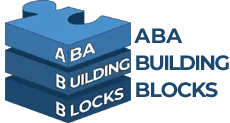In the realm of autism behavior consulting, the journey towards understanding and supporting individuals on the spectrum is marked by the collaborative efforts of professionals, caregivers, and the individuals themselves. “Building Bridges: Collaborative Approaches in Autism Behavior Consulting” delves into the intricate web of connections necessary to navigate this complex landscape effectively. From therapists to educators, and from caregivers to researchers, each plays a crucial role in fostering growth and development. This blog series explores the synergy between these stakeholders, highlighting innovative strategies, evidence-based practices, and personal narratives that illuminate the transformative power of collaboration in enhancing the quality of life for individuals with autism spectrum disorder. Join us on this journey of empathy, insight, and progress.
Understanding the Spectrum: A Multidisciplinary Perspective
Navigating the diverse and multifaceted nature of autism spectrum disorder (ASD) requires a comprehensive understanding from various disciplines. Psychologists, educators, therapists, and medical professionals each contribute unique insights that collectively paint a fuller picture of ASD. By integrating perspectives from neurology, psychology, and sociology, professionals can better tailor interventions to individual needs. Recognizing the spectrum’s broad range of abilities and challenges is fundamental to developing inclusive and effective strategies. This multidisciplinary approach fosters a holistic understanding of ASD, promoting empathy, acceptance, and tailored support that empowers individuals to thrive in diverse environments.
The Role of Caregivers: Nurturing Collaborative Environments
In the realm of autism behavior consulting, caregivers play a pivotal role in fostering collaborative environments that support the holistic development of individuals on the spectrum. Their involvement is not only crucial for implementing interventions but also for ensuring consistency and continuity of care across different settings. Here are six key ways in which caregivers can nurture collaborative environments:
- Open Communication Channels: Establish regular communication with professionals to share insights, concerns, and observations about the individual’s progress and challenges.
- Active Participation in Treatment Planning: Collaborate with professionals to develop individualized treatment plans that align with the individual’s strengths, preferences, and goals.
- Skill Building and Training: Seek opportunities to learn about evidence-based strategies and techniques for supporting the individual’s needs effectively.
- Creating Support Networks: Connect with other caregivers to share experiences, resources, and emotional support, fostering a sense of community and solidarity.
- Advocating for Accessible Services: Advocate for the availability of comprehensive and accessible services that address the diverse needs of individuals on the spectrum.
- Promoting Independence and Self-Advocacy: Encourage and empower the individual to develop self-advocacy skills and to participate actively in decision-making processes related to their care and support.
By actively nurturing collaborative environments, caregivers can contribute significantly to the well-being and success of individuals on the autism spectrum, fostering a supportive ecosystem that promotes growth, resilience, and self-determination.
Therapeutic Alliances: Strengthening Partnerships Between Professionals
Effective autism behavior consulting relies on strong therapeutic alliances between professionals from various disciplines. Psychologists, behavior analysts, speech therapists, and occupational therapists collaborate closely to design and implement tailored interventions that address the unique needs of individuals on the autism spectrum. By fostering trust, communication, and mutual respect, these partnerships enhance the effectiveness of interventions and promote holistic development. Therapeutic alliances not only facilitate the exchange of knowledge and expertise but also ensure continuity of care, empowering individuals and their families to navigate the challenges of ASD with confidence and resilience.
Bridging the Gap: Integrating Research and Practice
Integrating research findings into practical applications is essential for ensuring effective interventions in autism behavior consulting. By bridging the gap between research and practice, professionals can enhance the quality of support provided to individuals on the spectrum. Here are five key strategies for achieving this integration:
- Stay Current with Research: Continuously engage with the latest research literature to inform and update intervention strategies.
- Utilize Evidence-Based Practices: Implement interventions that have been rigorously tested and shown to be effective through research studies.
- Collaborate with Researchers: Foster partnerships with researchers to co-create interventions and participate in research studies that address practical challenges.
- Regular Training and Professional Development: Attend workshops, conferences, and seminars to learn about new research findings and their implications for practice.
- Data-Driven Decision Making: Use data collection and analysis to monitor the effectiveness of interventions and make adjustments based on empirical evidence.
By actively integrating research into practice, autism behavior consultants can ensure that their interventions are informed by the latest evidence and tailored to meet the unique needs of individuals on the spectrum, ultimately leading to more meaningful outcomes and improved quality of life.
Empowering Individuals: Self-Advocacy and Autonomy in Collaborative Settings
Empowering individuals with autism spectrum disorder (ASD) to advocate for themselves and exercise autonomy is a cornerstone of collaborative approaches in behavior consulting. By fostering self-awareness, communication skills, and decision-making abilities, professionals empower individuals to express their needs, preferences, and goals effectively. Through collaborative goal-setting and person-centered planning, individuals become active participants in their own care, leading to greater satisfaction, self-confidence, and independence. This emphasis on empowerment not only enhances the efficacy of interventions but also promotes self-determination and resilience, laying the foundation for lifelong success and fulfillment.
Community Engagement: Extending the Reach of Collaborative Initiatives
Community engagement is integral to extending the reach and impact of collaborative initiatives in autism behavior consulting. By partnering with schools, healthcare providers, advocacy groups, and community organizations, professionals can create a network of support that addresses the diverse needs of individuals on the autism spectrum. Community-based programs, workshops, and awareness campaigns promote understanding, acceptance, and inclusion, fostering a culture of support and belonging for individuals with ASD and their families. Through collective action and collaboration, communities can create environments that embrace neurodiversity and provide opportunities for all individuals to thrive and contribute meaningfully.
Conclusion
ABA Building Blocks LLC in Naples, Florida, we are dedicated to providing exceptional autism behavior intervention consulting services. Through collaborative approaches, we strive to build bridges between professionals, caregivers, and individuals on the spectrum, fostering environments of support, understanding, and growth. Our commitment to evidence-based practices ensures that interventions are tailored to meet the unique needs of each individual we serve. For comprehensive and compassionate support, contact us today at (833) 422-2249 or email us at info@ababuildingblocks.com. Together, we can empower individuals and unlock their full potential on their journey towards greater independence and well-being.






